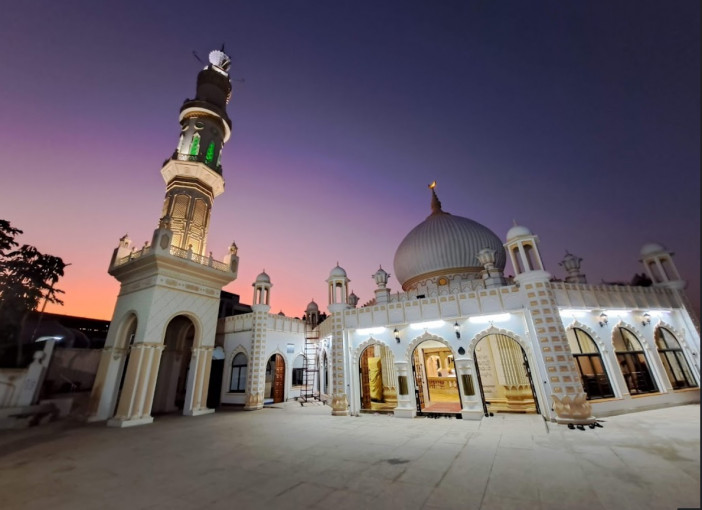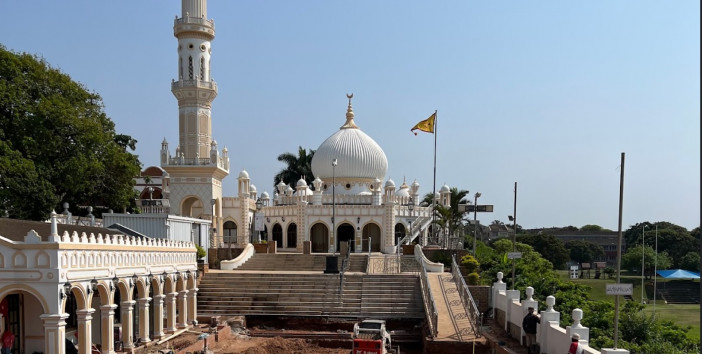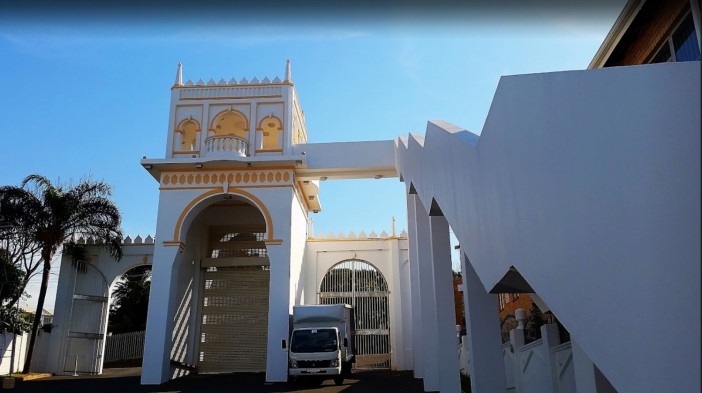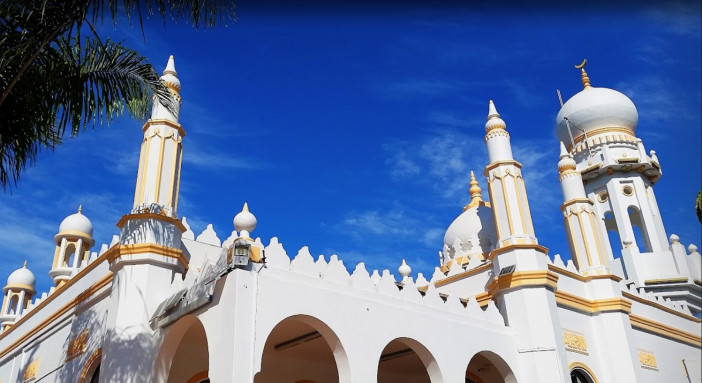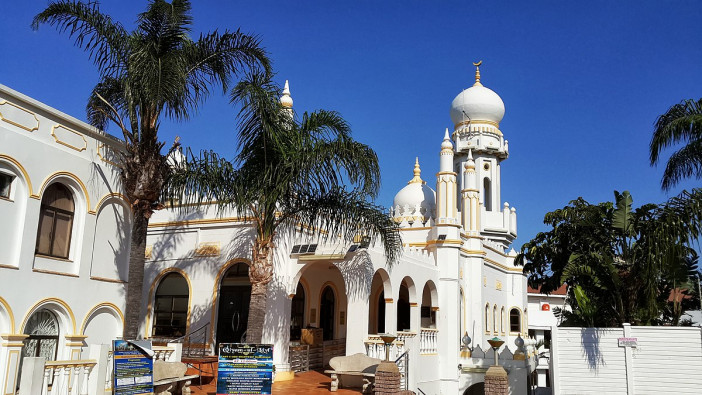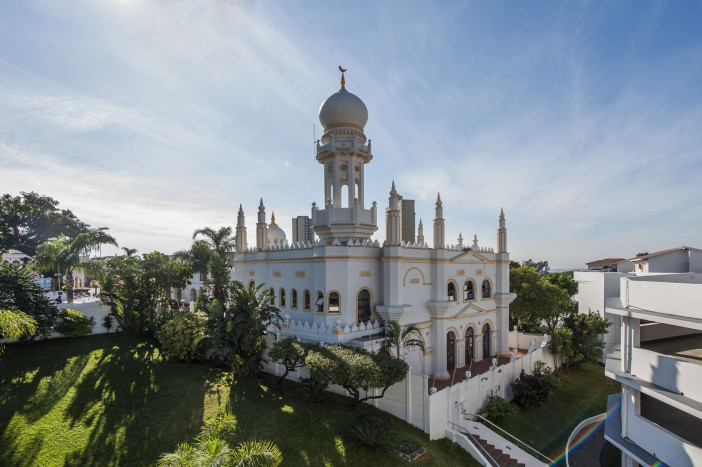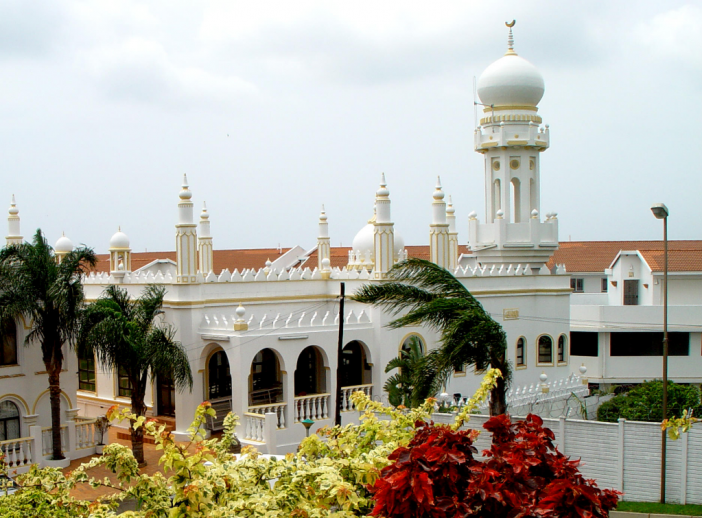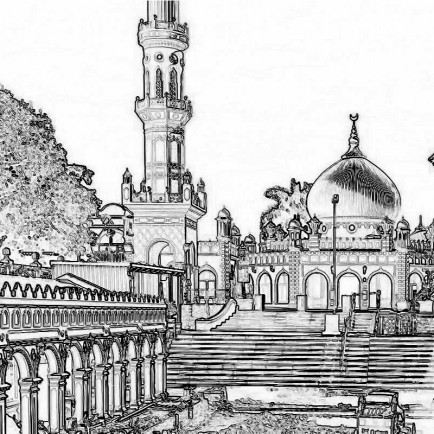Riverside Mosque and Mausoleum
History
The renowned Soofie Saheb, who moved to South Africa in 1895, built this mosque. He was in charge of establishing 13 madresas, building 11 additional mosques, and setting out a huge number of cemeteries. On June 29, 1911, Soofie Saheb passed away. His body is buried in the octagonal tomb that he had initially constructed for his spiritual leader.
Urban and Architectural
The initial plan was for a basic octagonal structure on a platform with a green printed steel roof. The building cracked as a result of construction of the nearby school, therefore it was redesigned. The new design, which included an impressive dome, was based on the previous one. Inside, It hubs a big and spacious prayers hall, and the Imam's residence. Later on a medrasa was established nearby and abultion are and many other facilities. The architectural langauge used in the design is influenced by the Moghul Indian Architecture, especially noticed in the minarets and the entrance.
Description
The Buland Darwaza, a stunning entrance to the darbar that is reminiscent of Moghul architecture in India, was built with the assistance of the locals beginning in the early 1920s and was finished in the 1930s, particularly one Baseerun, the wife of Busawan Mia of Sea Cow Lake.
Details
Location
Habibia Soofie Saheb Masjid/ Riverside Mosque, 50 Soofie Saheb Dr, Prospect Hall, Durban North, 4051, South Africa
Worshippers
210
Owners
Hazrath Soofie Saheb
Architect Name
Year of Build
1895
Area
420
Drawings
Map
History
The renowned Soofie Saheb, who moved to South Africa in 1895, built this mosque. He was in charge of establishing 13 madresas, building 11 additional mosques, and setting out a huge number of cemeteries. On June 29, 1911, Soofie Saheb passed away. His body is buried in the octagonal tomb that he had initially constructed for his spiritual leader.
Urban and Architectural
The initial plan was for a basic octagonal structure on a platform with a green printed steel roof. The building cracked as a result of construction of the nearby school, therefore it was redesigned. The new design, which included an impressive dome, was based on the previous one. Inside, It hubs a big and spacious prayers hall, and the Imam's residence. Later on a medrasa was established nearby and abultion are and many other facilities. The architectural langauge used in the design is influenced by the Moghul Indian Architecture, especially noticed in the minarets and the entrance.
Description
The Buland Darwaza, a stunning entrance to the darbar that is reminiscent of Moghul architecture in India, was built with the assistance of the locals beginning in the early 1920s and was finished in the 1930s, particularly one Baseerun, the wife of Busawan Mia of Sea Cow Lake.


